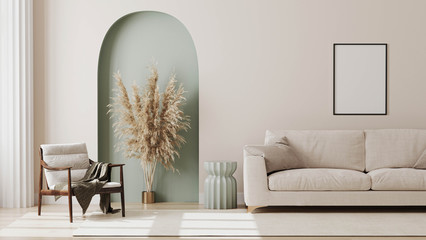In the furniture business, every walk-in customer matters. Marketing dollars, showroom design, and sales training all work together to attract shoppers—but how do you measure whether those efforts are paying off? That’s where people counters come in. For furniture retailers, these devices are more than just a tool for counting traffic; they provide the foundation for understanding your conversion ratio, one of the most important metrics in retail success.
What Is a Conversion Ratio?
Your conversion ratio (sometimes called a closing ratio) tells you what percentage of visitors actually make a purchase. For example, if 500 people walk into your store in a week and 50 of them make a purchase, your conversion ratio is 10%. Without knowing how many people enter, though, you’re left in the dark about whether your sales team is succeeding—or if you simply don’t have enough traffic to begin with.
Why Furniture Retailers Need People Counters
Unlike smaller retail categories, furniture shopping isn’t a daily activity. Customers often plan visits, shop with intent, and take time to make buying decisions. This makes tracking both traffic and sales crucial. A people counter helps by:
1. Measuring True Foot Traffic
Instead of guessing, you’ll know exactly how many potential buyers walked into your showroom. That baseline number is essential for evaluating both marketing efforts and store performance.
2. Revealing Sales Effectiveness
When you compare foot traffic data with point-of-sale transactions, you get a clear picture of how effective your sales team is at turning browsers into buyers. If 200 people enter and 20 buy, your conversion ratio is 10%.
3. Separating Marketing from Sales Issues
If traffic is low but your conversion rate is high, the issue may be marketing or advertising. On the other hand, if traffic is strong but conversions are low, it may be a sign that your sales process or staffing strategy needs attention.
4. Identifying Trends and Opportunities
People counters allow you to track daily, weekly, and seasonal traffic patterns. You can answer questions like:
- Do weekend promotions actually bring in more people?
- Are sales closing rates higher on certain days?
- Is the showroom layout impacting browsing behavior?
5. Improving Staffing and Training Decisions
Armed with traffic and conversion data, managers can adjust schedules to ensure peak hours are well-staffed. You’ll also know when low conversions point to a need for additional sales training, product knowledge, or customer service improvements.
From Data to Growth
Ultimately, a people counter gives furniture retailers clarity. It ensures you’re not just looking at how many sales you’ve made, but also at how many opportunities were missed. By understanding your conversion ratio, you can take targeted action to increase revenue—whether that means refining your marketing strategy or empowering your sales team.
Ready to Track Store Performance?
If you’re serious about improving your closing ratios and getting the most out of every customer who walks through your doors, TraxSales People Counters are designed specifically for retailers like furniture stores, giving you the tools to accurately measure traffic, analyze performance, and grow sales with confidence.
Learn more about how TraxSales can help your store thrive.Give Spencer Mink a call at 330-319-1445 today or set up a meeting that works with your schedule.


